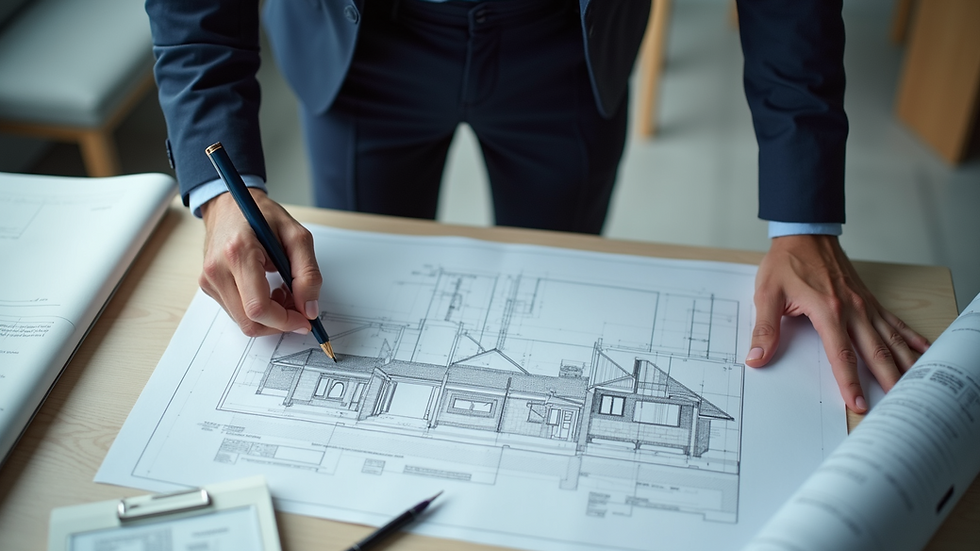Achieving Excellence Through Project Management Expertise
- Phase Zero
- Nov 17
- 4 min read
Successfully managing a design project requires more than just creativity and vision. It demands a structured approach that balances aesthetics, functionality, and timelines. Over the years, I have observed that the key to delivering outstanding results lies in mastering the art of project management. This post explores practical design project management tips that can help transform complex projects into seamless, value-driven outcomes.
The Importance of Design Project Management Tips
Design projects, whether for residential renovations or commercial spaces, involve multiple stakeholders, tight deadlines, and evolving client expectations. Without a clear management strategy, even the most talented teams can struggle to meet objectives. Implementing effective design project management tips ensures that every phase, from initial concept to final delivery, is handled with precision.
For example, setting clear milestones early on helps track progress and identify potential bottlenecks. Regular communication with clients and contractors prevents misunderstandings and keeps everyone aligned. Additionally, adopting digital tools for scheduling and documentation can streamline workflows and reduce errors.

Practical Design Project Management Tips for Success
To achieve excellence in design projects, I recommend focusing on the following actionable tips:
Define Clear Objectives
Start by understanding the client’s vision and requirements. Document these objectives clearly to guide the entire project. This clarity helps avoid scope creep and ensures that design decisions align with the intended purpose.
Develop a Detailed Project Plan
Break down the project into phases with specific deliverables and deadlines. Use Gantt charts or project management software to visualise timelines and dependencies. This approach helps anticipate challenges and allocate resources efficiently.
Engage Stakeholders Early and Often
Regular meetings with clients, contractors, and suppliers foster collaboration. Early engagement allows for feedback and adjustments before costly changes occur. Transparent communication builds trust and keeps the project on track.
Prioritise Risk Management
Identify potential risks such as budget overruns, material delays, or regulatory issues. Develop contingency plans to mitigate these risks. Proactive risk management reduces surprises and maintains project momentum.
Leverage Technology
Utilize tools like BIM (Building Information Modelling), cloud-based collaboration platforms, and mobile apps for real-time updates. Technology enhances accuracy, speeds up decision-making, and improves documentation.
Maintain Quality Control
Establish quality standards and conduct regular inspections. This ensures that the design intent is realised and that workmanship meets expectations. Quality control prevents rework and protects the project’s reputation.
Document Everything
Keep detailed records of decisions, changes, and communications. Documentation provides accountability and serves as a reference for future projects.
By integrating these design project management tips, I have seen projects run more smoothly and deliver superior results that satisfy both clients and teams.

What are the 5 C's of Project Management?
Understanding the 5 C's of project management can further enhance your approach to design projects. These principles provide a framework for effective leadership and execution:
Clarity: Ensure that goals, roles, and expectations are clearly defined. Ambiguity leads to confusion and delays.
Communication: Maintain open, honest, and timely communication among all parties. This fosters collaboration and problem-solving.
Commitment: Secure buy-in from the team and stakeholders. Commitment drives motivation and accountability.
Control: Monitor progress and manage changes carefully. Control mechanisms help keep the project aligned with its objectives.
Consistency: Apply processes and standards uniformly throughout the project. Consistency builds reliability and quality.
Applying these 5 C's helps create a disciplined yet flexible environment where design projects can thrive.
Integrating Project Management Expertise into Design
One of the most valuable assets in delivering successful design projects is project management expertise. This expertise combines technical knowledge with leadership skills to navigate the complexities of design and construction.
For instance, when working on a bespoke residential renovation in London, I applied project management expertise to coordinate architects, interior designers, and contractors. By establishing a clear timeline and communication protocol, we avoided common pitfalls such as scheduling conflicts and budget overruns. The result was a beautifully crafted home delivered on time and within budget.
Moreover, project management expertise enables the anticipation of challenges unique to London’s regulatory environment and supply chain constraints. This foresight allows for proactive adjustments that keep projects moving forward smoothly.
Enhancing Client Experience Through Effective Management
A well-managed design project not only achieves its technical goals but also enhances the client experience. Clients appreciate transparency, responsiveness, and professionalism throughout the process.
To improve client satisfaction, I recommend:
Providing Regular Updates: Share progress reports and visualisations to keep clients informed and engaged.
Setting Realistic Expectations: Be honest about timelines, costs, and potential challenges from the outset.
Offering Solutions, Not Just Problems: When issues arise, present options and recommendations rather than just highlighting difficulties.
Soliciting Feedback: Encourage clients to share their thoughts and concerns at key stages to ensure alignment.
These practices build confidence and foster long-term relationships, which are essential for a design studio aiming to be the go-to choice in London.
Moving Forward with Confidence in Your Design Projects
Mastering design project management tips is a continuous journey. Each project offers new lessons and opportunities to refine your approach. By embracing structured planning, clear communication, and proactive problem-solving, you can consistently deliver spaces that are both functional and beautiful.
Whether you are managing a small home renovation or a large commercial fit-out, the principles outlined here provide a solid foundation. Remember that investing time in project management upfront saves effort and resources later.
I encourage you to explore further resources and develop your skills in this area. With dedication and the right strategies, achieving excellence in design projects is well within reach.



